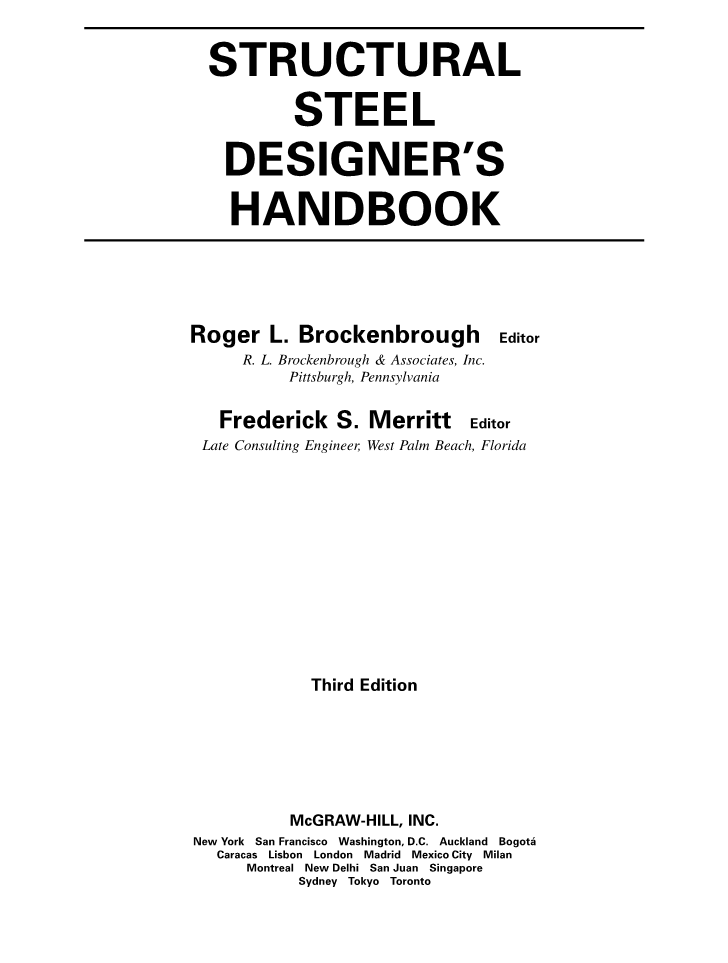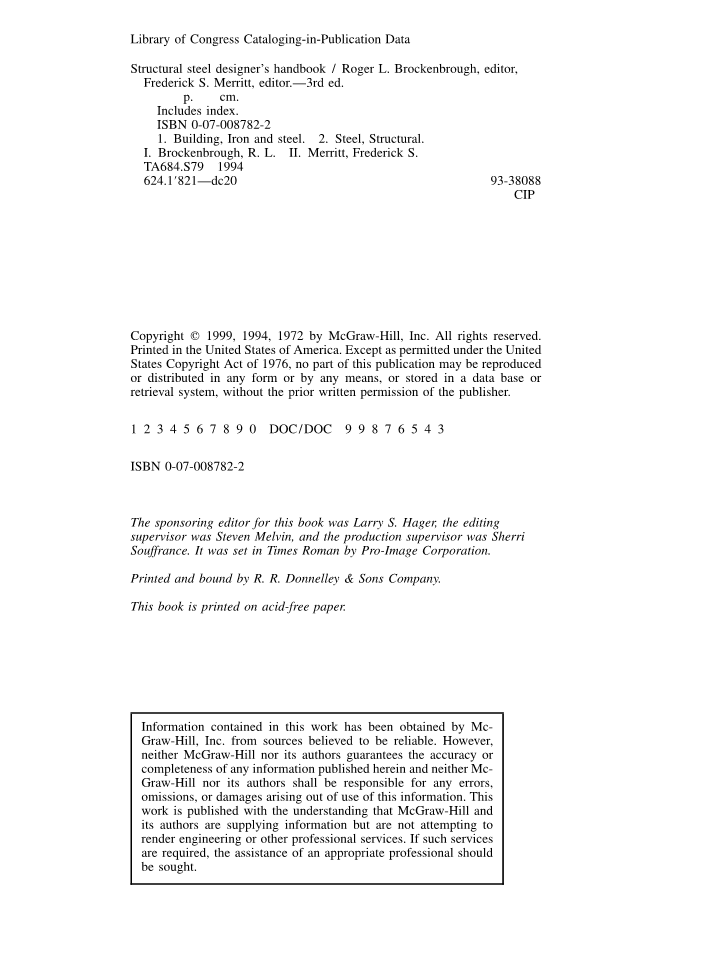

英语原文共 1201 页,剩余内容已隐藏,支付完成后下载完整资料
This section presents and discusses the properties of structural steels that are of importance
in design and construction. Designers should be familiar with these properties so that they can select the most economical combination of suitable steels for each application and use the materials efficiently and safely.
In accordance with contemporary practice, the steels described in this section are given the names of the corresponding specifications of ASTM, 100 Barr Harbor Dr., West Con- shohocken, PA, 19428. For example, all steels covered by ASTM A588, lsquo;lsquo;Specification for High-strength Low-alloy Structural Steel,rsquo;rsquo; are called A588 steel.
STRUCTURAL STEEL SHAPES AND PLATES
Steels for structural uses may be classified by chemical composition, tensile properties, and method of manufacture as carbon steels, high-strength low-alloy steels (HSLA), heat-treated carbon steels, and heat-treated constructional alloy steels. A typical stress-strain curve for a steel in each classification is shown in Fig. 1.1 to illustrate the increasing strength levels provided by the four classifications of steel. The availability of this wide range of specified minimum strengths, as well as other material properties, enables the designer to select an economical material that will perform the required function for each application.
Some of the most widely used steels in each classification are listed in Table 1.1 with
their specified strengths in shapes and plates. These steels are weldable, but the welding
materials and procedures for each steel must be in accordance with approved methods. Weld-
ing information for each of the steels is available from most steel producers and in
publications of the American Welding Society.
High-Strength Low-Alloy Steels
Those steels which have specified minimum yield points greater than 40 ksi and achieve that strength in the hot-rolled condition, rather than by heat treatment, are known as HSLA steels. Because these steels offer increased strengthatmoderateincreasesinpriceovercarbonsteels, they are economical for a variety of applications.
A242 steel is a weathering steel, used where resistance to atmospheric corrosion is of primary importance. Steels meeting this specification usually provide a resistance to atmospheric corrosion at least four times that of structural carbon steel. However, when required, steels can be selected to provide a resistance to atmospheric corrosion of five to eight times that of tructural carbon steels. A specified minimum yield point of 50 ksi can be furnished in plates up to3 /4 in thick and the lighter structural shapes. It is available with a lower yield point in thicker sections, as indicated in Table 1.1.
A588 is the primary weathering steel for structural work. It provides a 50-ksi yield point in plates up to 4 in thick and in all structural sections; it is available with a lower yield point in thicker plates. Several grades are included in the specification to permit use of various compositions developed by steel producers to obtain the specified properties. This steel pro- vides about four times the resistance to atmospheric corrosion of structural carbon steels. These relative corrosion ratings are determined from the slopes of corrosion-time curves and are based on carbon steels not containing copper. (The resistance of carbon steel to atmospheric corrosion can be doubled by specifying a minimum copper content of 0.20%.)Typical corrosion curves for several steels exposed to industrial atmosphere are shown in Fig. 1.2.
For methods of estimating the atmospheric corrosion resistance of low-alloy steels based on their chemical composition, see ASTM Guide G101. The A588 specification requires that the resistance index calculated according to Guide 101 shall be 6.0 or higher.
A588 and A242 steels are called weathering steels because, when subjected to alternate wetting and drying in most bold atmospheric exposures, they develop a tight oxide layer that substantially inhibits further corrosion. They are often used bare (unpainted) where the oxide finish that develops is desired for aesthetic reasons or for economy in maintenance. Bridges and exposed building framing are typical examples of such applications. Designers should investigate potential applications thoroughly, however, to determine whether a weathering steel will be suitable. Information on bare-steel applications is available from steel producers.
A572 specifies columbium-vanadium HSLA steels in four grades with minimum yield points of 42, 50, 60, and 65 ksi. Grade 42 in thicknesses up to 6 in and grade 50 in thicknesses up to 4 in are used for welded bridges. All grades may be used for riveted or bolted construction and for welded construction in most applications other than bridges.
Heat-Treated Carbon and HSLA Steels
Both carbon and HSLA steels can be heat treated to provide yield points in the range of 50 to 75 ksi. This provides an intermediate strength level between the as-rolled HSLA steels and the heat-treated constructional alloy steels.
A633 is a normalized HSLA plate steel for applications where improved notch toughness is desired. Available in four grades with different chemical compositions, the minimum yield point ranges from 42 to 60 ksi depending on grade and thickness.
A678 includes quenched-and-tempered plate steels (both carbon and HSLA compositions) with excellent notch toughness. It is also available in four grades with different chemical compositions; the minimum yield point ranges from 50 to 75 ksi depending on grade and thickness.
A852 is a quenched-and-tempered HSLA plate steel of the weathering type. It is intended for welded bridges and buildings and similar applications where weight savings, durability, and good notch toughness are important. It provides a minimum yield point of 70 ksi in thickness u
剩余内容已隐藏,支付完成后下载完整资料
资料编号:[152228],资料为PDF文档或Word文档,PDF文档可免费转换为Word
以上是毕业论文外文翻译,课题毕业论文、任务书、文献综述、开题报告、程序设计、图纸设计等资料可联系客服协助查找。


